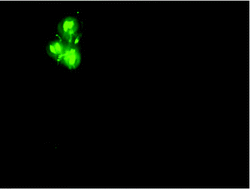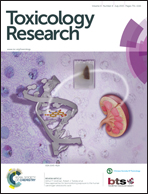Behavioral and dopaminergic damage induced by acute iron toxicity in Caenorhabditis elegans
Abstract
Iron (Fe) is an important metal to organism homeostasis and exists abundantly in the environment. Moderate levels of Fe obtained from food are necessary for normal cell physiology; however, abnormally high levels of Fe may have toxic effects by reducing H2O2 to the highly cytotoxic hydroxyl radical (OH˙) (Fenton catalysis). Fe is a ubiquitous toxicant to the environment and also widely used in food products; however, its effects on the nervous system are not well understood. Herein, we evaluated the toxic effects of Fe using C. elegans and investigated various parameters in order to contribute to the understanding of Fe-induced toxicity and to validate this model. The Fe LD50 of acute exposure (30 min) was 1.2 mM, and we verified that worms readily take up this metal. Furthermore, sublethal Fe concentrations significantly decreased the worms’ lifespan and brood size compared to non-exposed worms. We also observed that animals exposed to Fe had decreased locomotor activity and decreased mechanical sensitivity, suggesting the possible dysfunction of the nervous system. In agreement, we found cholinergic and dopaminergic alterations in the worms. In summary, we suggest that Fe leads to selective neuronal damage, which might be the underlying cause of altered behavior and reproductive defects.


 Please wait while we load your content...
Please wait while we load your content...